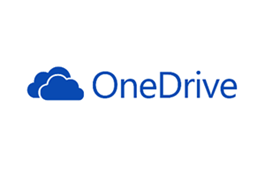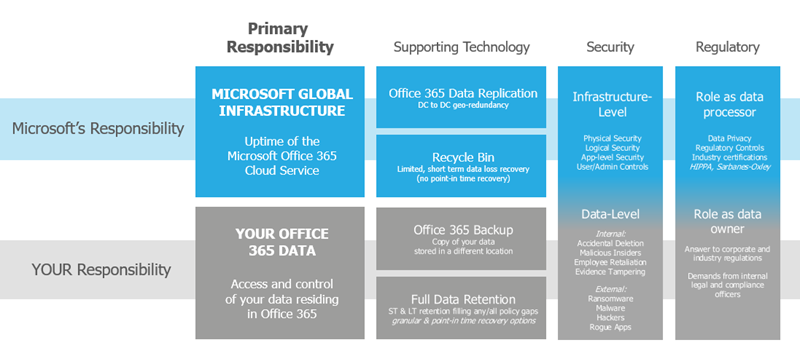Although Microsoft 365 (formerly known as Office 365) has been around since 2011, I still encounter many customers who do not use the service or other similar services eg Google's G Suite. Whether it's because they don't know what they are or why they should use them, this blog post will try to answer some of these questions by highlighting the benefits of Microsoft 365 and recommendations.
For the purposes of this blog post, I will only be focusing on Microsoft 365 Business and although I may mention on other items like Enterprise subscriptions, I won’t really be touching on these. I also won’t be discussing other services similar to Microsoft 365 like Google’s G Suite.
What is Microsoft 365
According to Wikipedia:
‘Microsoft 365 is a line of subscription services offered by Microsoft, as part of the Microsoft Office product line’.
As stated, all Microsoft 365 is a range of products and offerings; not one service. These services are subscription based providing flexibility to customers. It was officially launched in 2011 and in 2017, sales overtook that for the standard Office software we all know. Microsoft 365 services include but are not limited to the Office Desktop applications, collaboration tools, hosted business services, as well as email.
 Microsoft 365 is offered in a range of subscriptions not only to satisfy large enterprise businesses but also to satisfy small and medium-sized businesses (SMBs), personal home users, as well as free services for educational needs. All but the personal subscriptions are sold per user per month with discounts being offered for purchasing it annually.
Microsoft 365 is offered in a range of subscriptions not only to satisfy large enterprise businesses but also to satisfy small and medium-sized businesses (SMBs), personal home users, as well as free services for educational needs. All but the personal subscriptions are sold per user per month with discounts being offered for purchasing it annually.
As mentioned before, we'll be focusing on the Microsoft 365 Business subscriptions which are there to provide the Microsoft 365 services to SMBs of up to 300 users. Microsoft 365 Business comes in 3 flavours: Business, Business Essentials and Business Premium. Essentials provides access to just the cloud services, Business just the Desktop Applications with cloud storage and Business Premium is the combination of all of these. Below are the most popular services used by businesses:
Desktop Applications (Office Suite)
 Microsoft's Office Suite is what most people will be familiar with and is what gave Microsoft 365 its former name “Office”. The Office Suite consists of popular desktop applications such as Word, Excel, Outlook, PowerPoint and OneNote but can also include (depending on the subscription purchased) Publisher and Access. Although Microsoft Project and Visio both have desktop applications, they are not included within this suite and are sold separately. Microsoft have also made versions of the main products eg Word, Excel and PowerPoint, to work not only on mobile devices, but within a web browser providing true accessibility.
Microsoft's Office Suite is what most people will be familiar with and is what gave Microsoft 365 its former name “Office”. The Office Suite consists of popular desktop applications such as Word, Excel, Outlook, PowerPoint and OneNote but can also include (depending on the subscription purchased) Publisher and Access. Although Microsoft Project and Visio both have desktop applications, they are not included within this suite and are sold separately. Microsoft have also made versions of the main products eg Word, Excel and PowerPoint, to work not only on mobile devices, but within a web browser providing true accessibility.
OneDrive Service
 Microsoft’s OneDrive service has been running longer than Microsoft 365 and has been around in one form or another since 2007. OneDrive is Microsoft’s personal file hosting and synchronisation application and is offered in all the Microsoft 365 Business subscriptions. It allows users to store files and personal data within Microsoft’s cloud service as well as share files and synchronise data across multiple devices including mobile appliances. OneDrive is comparable to other cloud storage services like Dropbox and Google Drive.
Microsoft’s OneDrive service has been running longer than Microsoft 365 and has been around in one form or another since 2007. OneDrive is Microsoft’s personal file hosting and synchronisation application and is offered in all the Microsoft 365 Business subscriptions. It allows users to store files and personal data within Microsoft’s cloud service as well as share files and synchronise data across multiple devices including mobile appliances. OneDrive is comparable to other cloud storage services like Dropbox and Google Drive.
OneDrive however should not be confused with OneDrive for Business with the latter being used in conjunction with SharePoint to provides groups of users a place to store documents and collaborate with each other. OneDrive data is only based in the cloud whilst OneDrive for Business data, could be within the cloud or on-premise.
Exchange Online
 Microsoft Exchange is probably one of the most popular services for businesses to consume from Microsoft and is used for mail and calendaring purposes.
Microsoft Exchange is probably one of the most popular services for businesses to consume from Microsoft and is used for mail and calendaring purposes.
Exchange Online is an Exchange Server delivered as a cloud service hosted by Microsoft itself. It is built on the same technologies as on-premises Exchange Server and offers essentially the same services. Because of this, customers can choose to combine both on-premise and online options in a hybrid deployment, which of course can bring with it additional benefits, but at an additional cost and management overhead.
Sharepoint
 Microsoft SharePoint Online is much like Exchange Online in the fact that Microsoft deliver it as a cloud service hosted in their data centres. If you’ve never used it before, SharePoint is mainly advertised as a document management system but the product is highly configurable and usage can vary, although some of the configurability is lost in the online service.
Microsoft SharePoint Online is much like Exchange Online in the fact that Microsoft deliver it as a cloud service hosted in their data centres. If you’ve never used it before, SharePoint is mainly advertised as a document management system but the product is highly configurable and usage can vary, although some of the configurability is lost in the online service.
SharePoint Online's core set of functions are limited to collaboration, file hosting, and document and content management scenarios. As previously mentioned SharePoint Online can also host business users ‘OneDrive for Business’ data, which allows greater control for users and their data.
Teams
 Microsoft Teams is one of the newest services to Microsoft’s catalogue and is a unified communications platform that combines workplace chat, meetings and file storage as well as application integration. A lot of the Teams functions have been taken from and replaced the Skype for Business (SfB) offering, which was previously known as Lync.
Microsoft Teams is one of the newest services to Microsoft’s catalogue and is a unified communications platform that combines workplace chat, meetings and file storage as well as application integration. A lot of the Teams functions have been taken from and replaced the Skype for Business (SfB) offering, which was previously known as Lync.
Although SfB remains in place for certain situations such as on-premise and in use with a PSTN system, Teams has pretty much replaced it and is the only product available with Microsoft 365 Business subscriptions. Teams also integrates with other Microsoft products and services including OneDrive, OneNote, SharePoint and Outlook.
What are the benefits of Microsoft 365?
So now that we've outlined Microsoft 365 and the services offered, why would you consider purchasing this rather than the traditional desktop Office Suite and hosting mail internally? Although not all will apply or be relevant for your business, the 7 reasons below provide a flavour for what the products provide and why you should consider it.
- Price - Microsoft 365 subscriptions have a fixed price and are per user and not machine, meaning that you can plan expenditure against staff. It also provides flexibility allowing subscriptions to be added or removed on a monthly basis. If you need to keep that elasticity but want to save as much money as possible, we'd recommend having a set base on an annual subscription with the top up on a monthly basis allowing you to flex up and down as required.
- Flexibility - Because subscriptions are purchased monthly (or annually) this allows you to switch and add different subscriptions based on user and business requirements. For instance you can combine certain subscriptions as required eg Microsoft Project.
- Management - With Microsoft delivering several services, a lot of the management headaches are removed allowing anyone who runs the IT roles to focus on other areas rather than trying to maintain what software they have, where it is installed, what users have access etc.
- Infrastructure - Like the management benefit, because Microsoft are providing the service, a business doesn’t need to maintain the infrastructure for that service. This helps further reduce the effort required to maintain it for the business, but also can help save on costs including hardware, licensing, hosting and systems around it.
- Access - With Microsoft’s services being hosted within the cloud, access is available via the Internet. This allows users to access their data securely from almost any place and on almost any device including web browsers, Macs, tablets and mobile devices.
- Security - Microsoft pride themselves on security and always keeping it at the forefront of their services. Microsoft 365 is no different with a wide range of security certifications attached to it, more information can be found at https://products.office.com/en-gb/business/office-365-trust-center-welcome. You can also in certain instances state where you wish your data to be held with some of the services coming with security features as standard including mail filtering on Exchange Online. You can also look to include additional security services from Microsoft or even include 3rd party products to add to the current service.
- Storage - Microsoft provide a lot of storage as standard with their services, normally a lot more than you would provide via an onsite solution. As standard (if the appropriate business subscription is taken) Microsoft provide a 50GB mailbox for each user as well as 1TB of OneDrive space, if needed this can be increased to 99GB with an unlimited archive.
What you need to consider
Although Microsoft 365's services and subscriptions are well thought out, like everything, there are points to consider.
- The first, like a lot of products now-a-days, is that Microsoft 365 is a subscription-based service i.e. operational expenditure. Although it is offering more than just software, you never actually own anything which means you must keep spending to maintain it. Neverhteless, it can be said that whilst perpetual software doesn’t need you to keep spending money, it eventually needs updating or replacing which is a harder expenditure to plan for and sometimes get signed off.
- The second point and what a lot of people do not realise is that in the world of data protection, Microsoft are a data processor which means they themselves have certain responsibilities, but most of the responsibilities especially ones around the date lie with you as the data owner. In other words, Microsoft maintain the service and infrastructure, but it is your responsibility to maintain the data i.e. backups, retentions and where it is stored. The graphic from Veeam below will help...

The above is a representation of the Microsoft 365 Shared Responsibility Model. It could be that you are comfortable with how the service is being delivered and you are appropriately covered by what the service is providing, but there are offerings outside of Microsoft that can aid with meeting backup, retention and regulatory requirements.
- A consideration that is critical within the AEC and MEP industries is that large files don’t work well in cloud storage, not only because of bandwidth limitations, but also with latency. For example putting a Revit file in SharePoint may not work that well and users will more than likely complain about it being too slow or even data corrupting. There are a number of solutions available to work around this if you want to use Cloud storage, but Microsoft 365 is not really equipped for this kind of workload and is tailored more for smaller or read-only files like Office documents and media.
- Finally, the last thing to consider is what services you need access to and to look at what other providers offer. Microsoft have other Microsoft 365 subscriptions outside the Business titles which add more benefits, but at a cost. There are also other providers like Google who offer competing products. I won't go through the pros and cons of each, but a major plus of Microsoft 365 is that most people know the Office suite or have some form of Microsoft estate already in place which makes the migration and take-on easier.
For the reason outlined in this blog post, we are seeing more and more people switching to Microsoft 365 or considering it. Even if you’ve already made the decision to move to Microsoft 365 you may be unsure of how and when. Don’t be left in the dark, let us help you decide the best route, time and method to get there.
We manage a number of Microsoft 365 estates and migrations and have recently been implementing backups for Microsoft 365 as well archive and mail management systems. For more information on Microsoft 365, please visit our webpage by clicking below or feel free to contact us.
I want to thank Tech Data and Veeam for making me think further on Microsoft 365 and for some of the material in this blog.

Author
Simon Hurrell
Simon has been working in the IT industry for 15+ years with his focus and qualifications over the last 5 being within the IT Architecture space. Simon has worked for a number of IT organisations including some large, well-known data centre and cloud providers.
His knowledge covers a broad range of subjects within IT, and he has helped many clients choose solutions to solve problems and meet their business needs. Some of these include large infrastructure solutions, cloud-based projects, client-based hardware replacement programmes, and multi-stage IT tenders for new IT incumbents.










